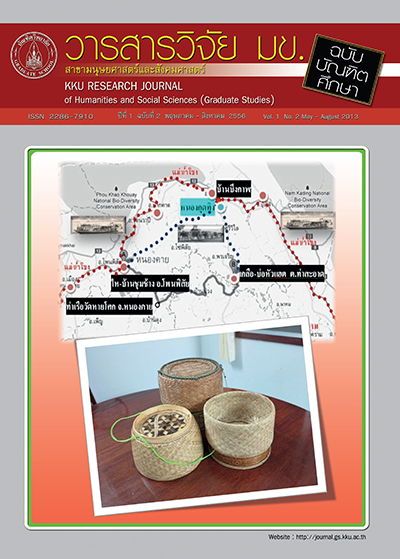การสร้างรูปแบบการเรียนรู้แบบปัญหาเป็นฐานร่วมกับเทคนิค เค ดับเบิ้ลยู แอล พลัส ที่มีระบบเสริมศักยภาพ เพื่อพัฒนาการคิดอย่างมีวิจารณญาณ
คำสำคัญ:
Problem-based learning model(รูปแบบการเรียนรู้แบบปัญหาเป็นฐาน), KWL Plus technique(เทคนิค เค ดับเบิ้ลยู แอล พลัส), Critical thinking(การคิดอย่างมีวิจารณญาณ)บทคัดย่อ
งานวิจัยนี้มีวัตถุประสงค์เพื่อ 1) สร้างรูปแบบการเรียนรู้ และ 2) ประเมินรูปแบบการเรียนรู้ วิธีการดำเนินงานวิจัย คือ1) การสร้างรูปแบบการเรียนรู้ประกอบด้วย การวิเคราะห์ การออกแบบและการพัฒนา และ 2) การประเมินรูปแบบการเรียนรู้โดยนำเสนอรูปแบบในการสนทนากลุ่มผู้เชี่ยวชาญด้านคอมพิวเตอร์ และด้านการศึกษา ซึ่งได้มาจากการเลือกแบบเจาะจงจำนวน 12 คน เพื่อพิจารณาและประเมินรูปแบบการ เรียนรู้ จากนั้นปรับปรุงรูปแบบการเรียนรู้ตามข้อเสนอแนะของผู้เชี่ยวชาญ ผลการวิจัยได้รูปแบบการเรียนรู้ แบบปัญหาเป็นฐานร่วมกับเทคนิค เค ดับเบิ้ลยู แอล พลัส ที่มีระบบเสริมศักยภาพเพื่อพัฒนาการคิด อย่างมีวิจารณญาณ มีองค์ประกอบ 2 ส่วนคือ 1) ส่วนของระบบ ประกอบด้วย 4 โมดูล ดังนี้ Critical Thinking Test Module Pre-Post Test Module Learning Module และ Act Module และ 2) ส่วนของผู้ใช้ ประกอบด้วย ผู้เรียน ผู้สอนและผู้ประเมิน ผลการประเมินรูปแบบการเรียนรู้ พบว่า ผู้เชี่ยวชาญ ทั้ง 12 คน มีฉันทามติให้การยอมรับรูปแบบการเรียนรู้ว่ามีความเหมาะสมและสอดคล้อง สามารถนำไปใช้ ในการเรียน การสอน เพื่อพัฒนาให้ผู้เรียนมีการคิดอย่างมีวิจารณญาณ
The objectives of this research were: 1) to create a learning model, and 2) to evaluate the learning model. The research processes were 1) the creating of the learning model consisted of the analysis, the design, and the development, and 2) the evaluation of the learning model was done by using focus group technique of 12 experts in computer and education fields who were selected by purposive sampling, and then the learning model was revised followed the comments of the experts. The results found that the learning model was a problem-based learning model cooperates with KWL Plus technique using scaffoldings system to develop critical thinking that consisted of 2 parts as follows: 1) the system that has 4 modules as follows: Critical Thinking Test Module, Pre-Post Test Module, Learning Module, and Act Module, and 2) the user consisted of students, teacher and evaluator. The evaluation results of the learning model from 12 experts revealed that the experts accepted the learning model. The learning model was appropriate and the model can be used for learning and teaching to develop critical thinking.




